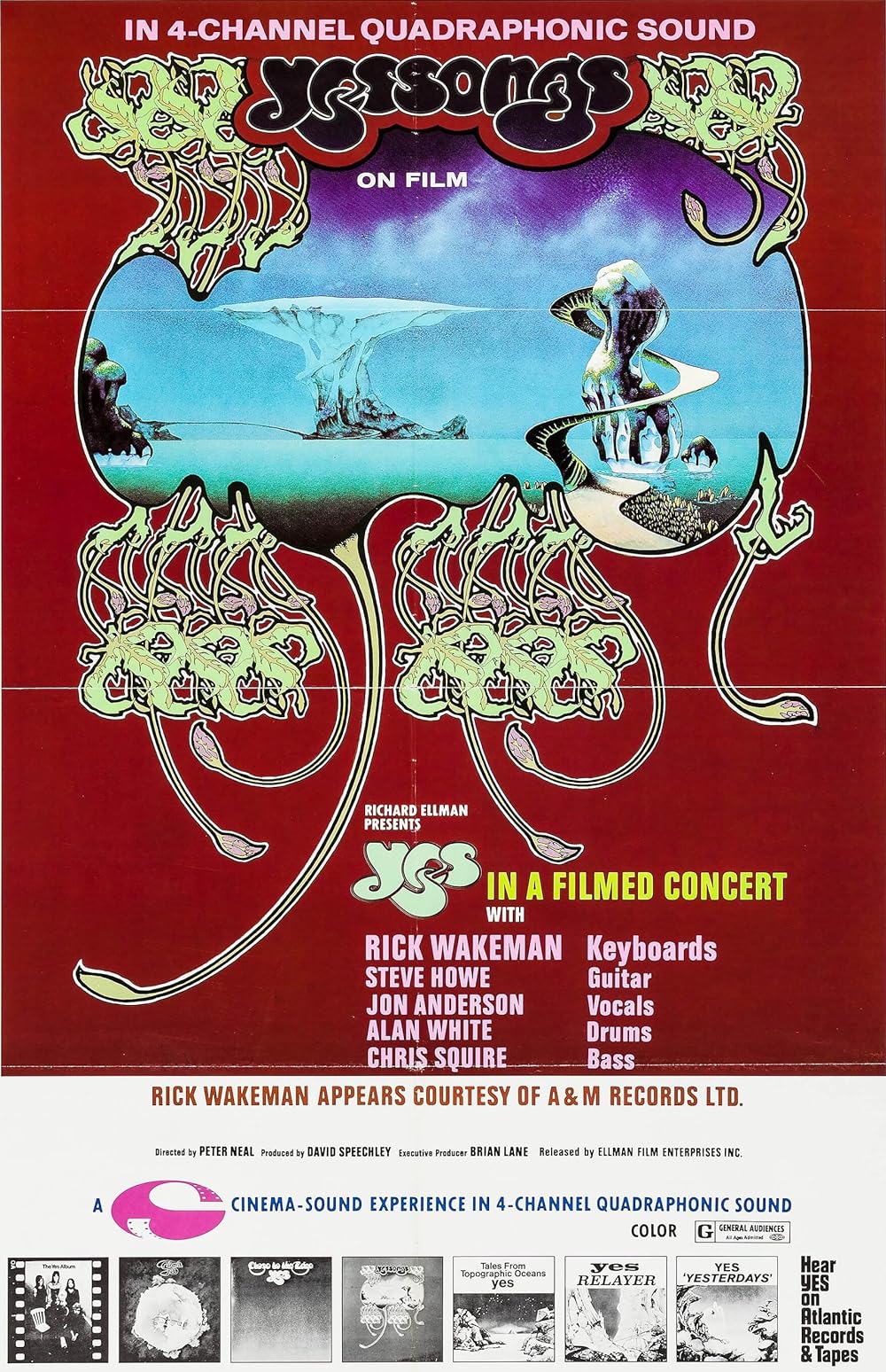1) 35mm 4-track magnetic stereophonic sound with
2) a standby optical track,
3) 35 mm optical monaural soundtrack,
4) 16mm magnetic soundtrack
5) 16mm optical soundtrack.
Does (2) refer to an optical (versus magnetic) version of the 4-track 'stereophonic sound' track?
Or does (2) actually just refer to (3), the 'optical monoaural track'?
Are the 16 mm options both mono?
NB nowhere here does it offer something like a '2 track stereo' option, like you'd find on an LP. Stereo soundtracks in theaters were rare in 1975.
Paul Robinson ... film sound synchronisation
"35mm 4-track magnetic sound with a standby optical soundtrack" refers to what used to be called a "magoptical" print. It had four magnetic tracks for theaters equipped to play it as well as a standard mono optical track for everyone else (see
FSM Board: Bridge On the River Kwai Restoration). It's frankly something of an odd thing to do because magnetic soundtracks, while better than the optical ones of the day, were expensive and delicate. It's not something you'd have wanted to routinely provide just in case it might some day be useful to someone, it's more of a specialty thing you'd do for those who specifically requested it. But I suppose if someone accidentally got shipped the wrong print, they'd still be able to run the movie. Maybe the more recent equivalent would be DTS, where a 35mm print would have the time code necessary to sync to the DTS CD-ROM but would also carry a standard optical track in case the discs got separated from the print (which a former projectionist friend says was a real problem, so much so that the industry joke was that DTS stands for "Do They Ship?").
A standalone 35mm mono optical soundtrack was the industry standard from the very first sound-on-film days until Dolby Stereo came along, and even then it was a modification of the old technology rather than something radically new. At the time "Yessongs" was new, there was no optical Dolby Stereo, so the track would have been mono.
16mm magnetic soundtracks were routinely used at the very least for news reporting in the pre-video days. This is the only time I've ever heard of the technology potentially being used for actual commercial theatrical showings, though that could just be ignorance on my part. Presumably it could have sounded better than 16mm optical, though I wonder if it might have simply traded optical crackles and pops for magnetic hiss.
16mm optical is what those of us old enough to have sat through school film showings heard every single time. 100% standard and universally compatible. It's also what we would most of us would have been listening to while watching anything on TV from film. (Some richer stations in bigger markets did have 35mm film chains, but it wasn't common.)
I've heard of specialty 16mm DTS installations but am not aware of any 16mm magnetic stereo prints. It's not necessarily impossible, as there were magnetic stripes on both sides of the film, but one was much narrower than the other and was intended solely to make the film evenly thick on both sides. Apparently there was at least one Super-8 stereo projector that took advantage of both tracks, but its alleged existence is literally all I can remember about it.
Two-track stereo would be unusual and even if it existed would probably have been played from a print striped for four tracks. As far as I know, the only common multichannel theatrical sound formats were:
1. Cinerama: 7.0 - Five screen channels, stereo surround. Played from an interlocked "dubber" that reproduced the sound from full-coat magnetic 35mm film. Combined with the three projectors necessary to present the image, Cinerama required
FOUR different devices to all run in perfect sync.
2. Todd-AO (and later 70mm): 6.0 - Five screen channels and mono surround played from magnetic stripes on the same film as the image.
3. CinemaScope: 4.0 - Three screen channels and mono, bandwidth-limited surround played from magnetic stripes on the same 35mm film as the image. In the image linked to above, you can immediately spot which stripe carried the bandwidth-limited track. That track also carried a control tone to only have the surround speakers active when needed, preventing them from just hissing when they were intended to be silent.
Having said that, there are videos out there from companies that generally try to do the right thing that have old non-mono, pre-Dolby movies with 2.0 soundtracks. I don't know what the story is behind that. Criterion's "The Man Who Fell to Earth" comes to mind: It was pre-Dolby, so I'd expect anything other than mono to be mixed using the CinemaScope 4.0 format, but the Criterion Blu-ray has a 2-channel soundtrack with no explanation that I've ever been able to find. There are a handful of others as well, but unfortunately, none that I can remember at the moment. Oh, yeah: Kino Lorber's "A Funny Thing Happened on the Way to the Forum"...the Blu-ray is 2.0 and the stereo is clearly real, but it's weird that it's not 4.0. Maybe some movies really were mixed that way.
You're right that stereo soundtracks were rare in 1975, but they were out there, sometimes in surprising places. Big-budget movies that got fancy roadshow releases commonly used them, especially musicals, though even there some movies that you'd expect to have stereo mixes never did.
In the early years of CinemaScope, 4-track stereo was mandatory, but Fox relented after a while when some exhibitors refused to install the equipment. At least some 3D movies had stereo tracks (commonly run interlocked as Cinerama did), though sadly a lot of the stereo mixes were junked before the video age.














